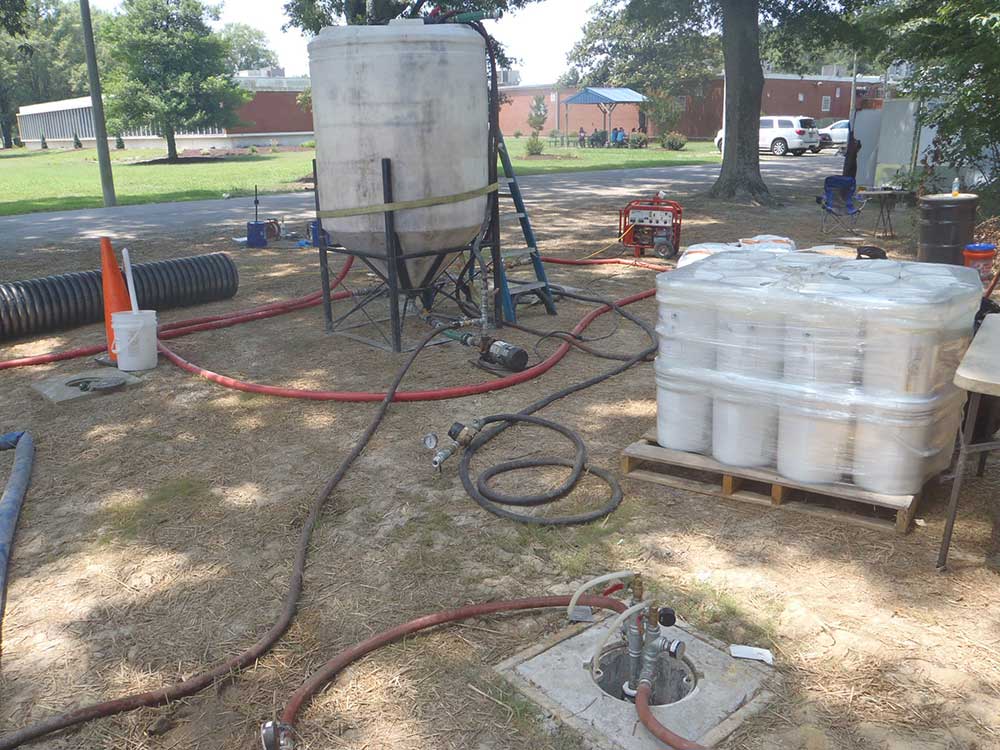Manufacturers can address environmental contamination with bioremediation to achieve significant results at lower costs.
By Bilgen Yuncu, PhD, PE
Manufacturing and industrial facilities have played an integral part in the expansion of the American economy for well over a century. As manufacturing systems and processes have become more sophisticated over the decades, manufacturing and industrial facilities have faced a number of complex challenges. Minimizing and managing contamination at industrial sites is at the top of that list. For legacy sites in particular, addressing contamination from years ago can be vexing and prevent the redevelopment of that site for other uses.
The scale of this challenge is significant and affects all industrial sectors. The U.S. EPA offered a glimpse of the extent of this effort when the agency reported in 2017 that they and their state counterparts provided oversight to approximately 1.3 million facilities to minimize the release of environmental contaminants.
Treatment of contamination caused by hazardous chemicals at industrial and manufacturing sites can be difficult given their complex nature. There are a number of potential solutions available to manage chemical releases at industrial sites. In recent years, bioremediation has emerged as a leading option to reduce contaminants at operating facilities and even address long-shuttered legacy sites. Perhaps most attractive aspect of bioremediation is that this strategy produces highly effective results at comparatively lower costs than other relevant treatment technologies.
Bioremediation is the use of naturally occurring or genetically engineered living organisms, mostly microorganisms like bacteria or fungi, to consume and degrade pollutants in contaminated media, including water (groundwater and surface water), soil, and sediment. An engineered technology, bioremediation modifies existing environmental conditions to encourage microorganisms to completely or partially transform the pollutants into environmentally-acceptable chemicals or alter their mobility.
As a well-established treatment technology, bioremediation has been used as an effective method of degrading various forms of organic pollutants such as chlorinated solvents and petroleum hydrocarbons in groundwater and soil. Bioremediation can also be used to bio-transform non-biodegradable pollutants such as heavy metals and radionuclides to less mobile forms.
Bioremediation technologies can be applied in situ (in place) or ex situ (removed from place). The ex situ methods, such as bioreactors or composting require the removal of the contaminated material and its transportation to another area for treatment, which can trigger additional regulatory requirements. In situ technologies such as bioventing or biostimulation involve treatment of contaminated media where it is located.
In situ bioremediation can be accomplished through natural attenuation, biostimulation, and bioaugmentation in groundwater and soil. Natural attenuation leverages the natural remediation capacity of microbials present in a contaminated site to achieve contaminant removal. Biostimulation consists of adding nutrients to encourage indigenous microorganism growth and thus enhance the rate and extent of biodegradation of target contaminants. Bioaugmentation is the inoculation of contaminated sites with strains or microbial consortia (a group of two or more different microbial species that work together) with biodegrading capacities when an appropriate population of microorganisms does not exist or is too slow to stimulate complete remedial of the existing contaminants.
An advantage of bioremediation is that it’s highly tailored to a specific site. The exact approach will depend upon a variety of conditions at the site and the type of contaminants that need to be eliminated. Bioremediation takes more time than other treatment alternatives such as excavation or incineration.

Example of a subsurface injection system for in situ bioremediation at an industrial site.
As an example, a manufacturing facility in Arkansas contaminated with chlorinated solvents implemented in situ bioremediation through subsurface injection of emulsified vegetable oil (biostimulation) and reduced contamination by more than 99 percent in about four years. Similarly, in another former manufacturing site in North Carolina contaminated with chlorinated solvent contamination and very low pH (~ 3) in groundwater, the contaminant concentrations were decreased approximately 90 percent in about seven years with the implementation of biostimulation, bioaugmentation, and pH buffer injection.
The most effective bioremediation strategies focus on three practices:
The versatility inherent in bioremediation strategies makes this approach ideal for industrial sites because contamination and hazardous byproducts are an unfortunate reality for manufacturers. Identifying solutions, like bioremediation, to manage and mitigate those complex challenges is a great way for businesses to address their environmental challenges and liabilities in an efficient manner.

Bilgen Yuncu
Bilgen Yuncu is an Environmental Engineer with Draper Aden Associates, a mid-Atlantic engineering, surveying, and environmental services firm. Based in the firm’s Raleigh, NC office, she serves as a project manager and remediation group program manager. Bilgen specializes in bioremediation strategies of hazardous compounds in soil and groundwater. She received her PhD from North Carolina State University, holds a NC Professional Engineer license, and is a Project Management Professional. Bilgen can be contacted at byuncu@daa.com.
Scott Ellyson, CEO of East West Manufacturing, brings decades of global manufacturing and supply chain leadership to the conversation. In this episode, he shares practical insights on scaling operations, navigating complexity, and building resilient manufacturing networks in an increasingly connected world.